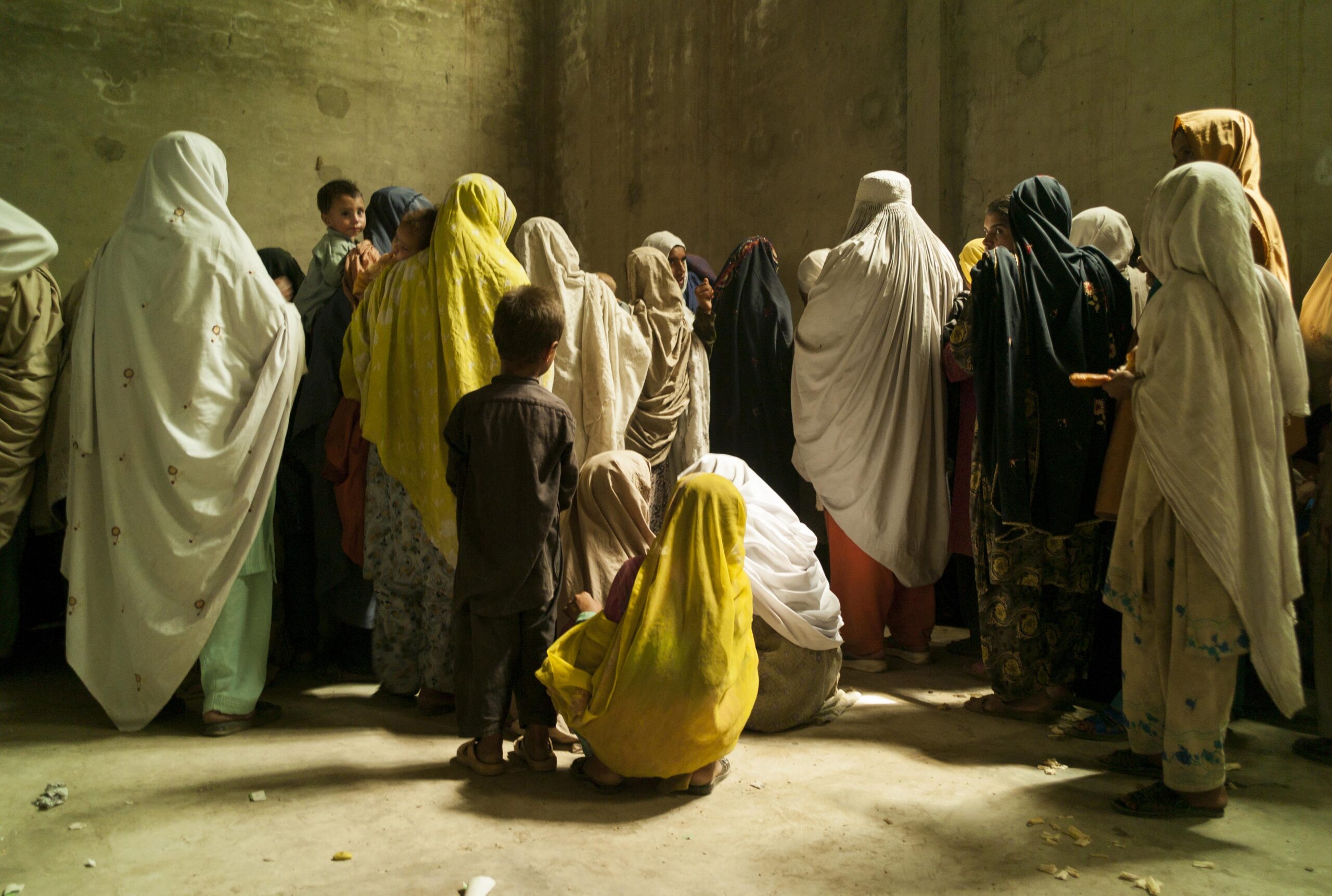Dwudniowe warsztaty skupią się na tworzeniu i rozwijaniu długoterminowych fotograficznych projektów dokumentalnych.
LAHORE, PAKISTAN- NOVEMBER 2009
A few days ahead of her wedding, fourteen year old Afghan refugee Zeenat Gul is helped by her mother as she tries on her hand made red beaded wedding dress at their one room home in the slums of Sagiam Pull.
One of ten siblings, Zeenat was born at the refugee camp of Kohart in Pakistan’s North West Frontier Province after her family fled fighting in Kunduz. Relocating to the suburbs of Lahore, they now live along with thousands of other Afghanis in a camp beside the city’s garbage dump where the marginalised community survive by recycling other peoples’ rubbish.
Zeenat Gul has yet to meet her fiance but has been busy making her in-laws to be gifts of beaded combs, mirrors and jewelry. Now liberated from her work in the dump, her mother Barangul has been advising her teenage daughter about marriage. The sensitive topic of sex will not be raised until the wedding night, „When a girl marries, then she will become a woman”.
Alixandra Fazzina:
– poprowadzi uczestników przez proces planowania i tworzenia dokumentu. Skupi się na wypracowaniu własnego stylu wizualnych opowieści.
– zaprosi do dyskusji, która pomoże myśleć historiami. Historiami, które opowiadane z wrażliwością mogą być niezwykle intrygujące i interesujące.
– zajmie się zawiłościami moralnymi i etycznymi wynikającymi z pracy fotoreportera i utrwalaniu na fotografiach życia innych ludzi.
SHIMBIRO, SOMALIA- NOVEMBER 2007
Standing in choppy shoulder deep water, Somali refugees look back anxiously from the sea as they try to locate friends and relatives left behind on Shimbiro Beach. Preparing to board one of three smuggler’s boats that will depart simultaneously for Yemen, many of the passengers have become separated from those that they had hoped to make this high-risk journey with.As the crew hauls passengers from the water, each is already soaking wet as they step onboard. Before they even depart, the one hundred and twenty eight Somalis and Ethiopians tied down inside the tiny boat begin to shiver as strong winds blow in for the sea. Their fate is now sealed. Only eleven of the people who took this boat were to ever reach Yemen alive.
Ważnym elementem warsztatów będzie przegląd portfolio. Tutaj ważnym aspektem będzie edycja – wybór zdjęć. To etap kształtujący dokumentalny projekt fotograficzny.
Alixandra Fazzina (Wielka Brytania) jest fotografką, której praca koncentruje się na często zapomnianych humanitarnych konsekwencjach konfliktów. Jeszcze podczas studiów artystycznych, zaczęła swoją fotograficzną pracę w Bośni. Od tego czasu pracuje jako niezależna fotoreporterka w całej Europie Wschodniej, Afryce, na Bliskim Wschodzie i w Azji.
W 2010 roku Wysoki Komisarz Narodów Zjednoczonych do spraw Uchodźców (urząd będący organem ONZ) przyznał Alixandrze nagrodę “UNHCR Nansen Refugee Award” za nieustraszone i niestrudzone poświęcenie fotografii tematom humanitarnym. Alixandra jest autorką książki “A Million Shillings – Escape From Somalia”, która opowiada o podróży, nierzadko śmiertelnej, uciekinierów z Półwyspu Somalijskiego. Jej długofalowy projekt „Kwiaty Afganistanu” dokumentuje podróże afgańskich dzieci szukających schronienia w Europie.
Oprócz fotografii i pisania, Alixandra pracowała jako badaczka i producent w mediach audiowizualnych i regularnie współpracuje z radiem. Alixandra regularnie wykłada i prowadzi warsztaty na całym świecie dla takich organizacji jak: World Press Photo, Reporters Without Borders oraz The Royal Photographic Society. Prowadzi wykłady z zakresu sztuki, fotografii i mediów na festiwalach fotografii i literatury oraz na studiach podyplomowych i podyplomowych na uniwersytetach.
SHAHR-I-BUZORG, AFGHANISTAN- AUGUST 2008
Siamoy breast feeds her month old baby boy Hokim as she goes to visit her sisters at their home in Khourdakon village.
Situated in the remote mountainous province of Badakshan, the area has the highest rate of maternal mortality in the world.








